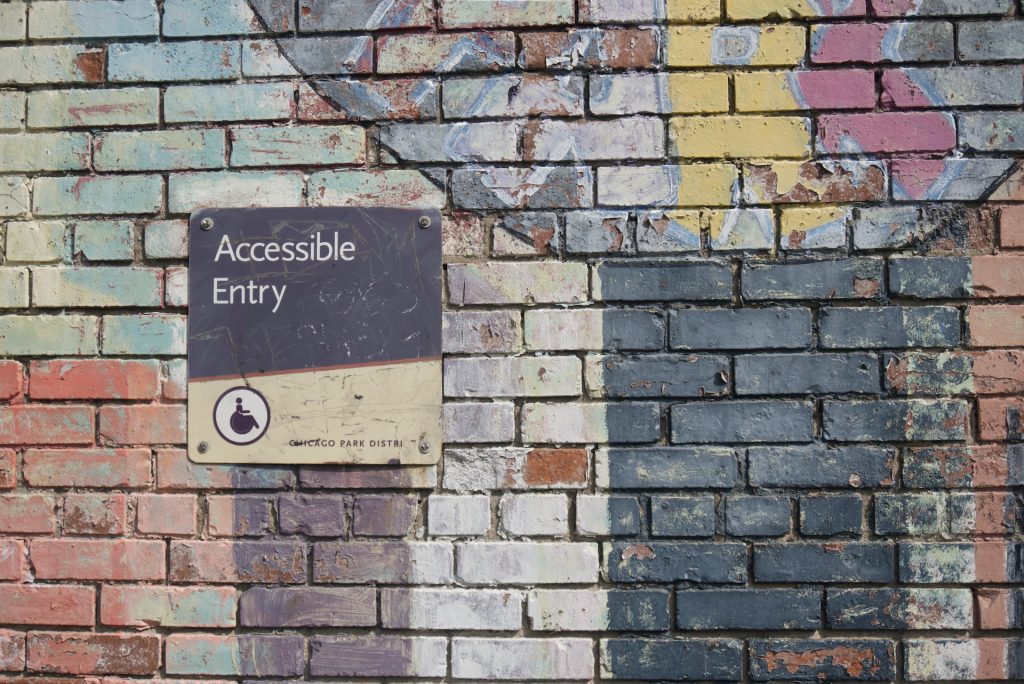7.8 Barriers Impacting Wellness in the Early Years
Many families face barriers in accessing early years settings that meet their needs and the needs of their children. These barriers are extensive and varied, including accessibility, inclusivity, affordability, and responsiveness. When a family cannot access the support of an early years setting of their choosing, they are forced to remain out of the workforce, to access programs that are not culturally relevant, or to use alternative arrangements that are not their preferred choice.
Barriers to Access

Many families in Canada live in remote communities or in communities without easy access to an early years setting. Transportation may be an issue reaching early years settings that are too far from home or are not accessible by family members to travel to and from the location each day. The Canadian Centre for Policy Alternatives recently ranked London, Ontario as being one of the lowest-capacity cities in Canada for providing licensed child care for children under kindergarten age, implying London is a child care desert (2023). During the same time period, a report from local advocates indicates London Transit is not accessible for many users (London News Today, 2023). These barriers prevent many families from accessing any early years setting, let alone a preferred early years setting. These issues of accessibility are amplified in the surrounding counties, rural areas, and remote locations in Northern Ontario.
The new Canada-Wide Early Learning and Child Care (CWELCC) plan has made licensed child care more affordable for families. With the decrease in child care fees, there has been an increase in demand for spaces. Many early years settings have long waiting lists for a licensed space. Until more spaces are built, the waiting lists will continue to grow. An additional issue impacting the ability of licensed child care agencies to grow is the lack of qualified educators. All levels of government are working together to enhance the workforce conditions in the early years to recruit and retain qualified educators. The early years system cannot expand in Canada until the infrastructure issues are addressed, leaving many families left without access to licensed child care.
Barriers to Inclusion

Early years settings are often limited in resources, including human resources, funding, and support for inclusive practice. The funding for agencies to provide support for early years settings to ensure all children receive equitable and inclusive care is very limited. Excellent partnerships have been established between early years settings and resource consultants, but the lack of funding for these services impacts the amount of support available. Children may require specialized equipment or support in the classroom. With limited funding, additional human resources are not often available. In rare circumstances, this may prevent an early years setting from providing services for a family.
A lack of training and awareness may also hinder a program from providing services for a child with special needs. Expectations for programs are outlined in How Does Learning Happen? to aid early years settings in understanding their role in providing services for young children. Educators are involved in ongoing professional learning to guide their knowledge and understanding of how to meet these expectations.
The expectations for programs provide pedagogical direction for educators as they:
- cultivate authentic, caring relationships and connections to create a sense of belonging among and between children, adults, and the world around them;
- nurture children’s healthy development and support their growing sense of self;
- provide environments and experiences to engage children in active, creative, and meaningful exploration, play, and inquiry;
- foster communication and expression in all forms.
(OME, 2014)
All organizations in Ontario must adhere to accessibility standards and embed accessibility policies into their settings. Early years programs can apply for funding to ensure their spaces are accessible for all children, families, and employees. Funding streams may cover costs related to retrofitting a space or for training employees. Ministry of Education program advisors and agency resource consultants work in partnership with early years settings to promote accessible services for children. Resource consultants support programs with assessing their learning spaces to ensure they are accessible for all children and encompass the universal design for learning guidelines.
Barriers to Affordability

While the new CWELCC plan is making child care more affordable for families, many families are not able to afford the lower fees. Child care fee subsidies are available for qualifying families, but not all families qualify for a subsidy based on their income status. Many families are struggling financially to purchase basic necessities and are relying more on food banks and other financial supports. The most recent report states that 1 in 6 children in Ontario live below the poverty line (CCPA, 2021).
Families who are receiving financial assistance through the Ontario Works program may qualify for a subsidy for child care when engaged in a training program. Once the training program ends, families no longer qualify for child care fee subsidy until they are employed. This is challenging for families who do not have support for child care while searching for employment. This break in service impacts the ability of families in seeking employment if they have young children.
Newcomers to Canada may not be aware of the services available to financially support them and their family. Often, early years settings are the first point of contact for families. Educators and organizations must have knowledge of available services and resources to share with families who are requiring additional support. Many services are available through Family Centres and Early ON programs throughout Ontario. These community support organizations work in partnership with local public health units and municipal children’s services.
Review the following sites for more information about local Family Centres and Early ON programs:
Families may be experiencing food insecurity and homelessness during the time their children are enrolled in an early years setting. Programs need to be knowledgeable of the resources available for families to ensure children are receiving the care necessary for their well-being. Many shelters are available in local communities to support families, but they are often full, or families may choose not to enter the shelter system. Educators build trusting relationships with families and may be the first person with whom a family discloses their living situation. Awareness of community partners that can help families in accessing safe housing is necessary when supporting children and their families.
Read
Read the Families with Children resource from Homeless Hub to understand more about why children may be experiencing homelessness.
Barriers to Responsive Care

Culturally responsive teaching was discussed earlier in this chapter. A lack of awareness of culturally responsive teaching practices constructs barriers for children and families. Children and families need to see themselves in early years settings in order to feel a sense of belonging and well-being. Newcomers to Canada may not know anyone as they settle in Canada and may want to connect with those who share the same cultural traditions. Early years settings can play an instrumental role in connecting families within communities to build a sense of belonging and well-being.
Educators also need to see themselves in the learning space and share in opportunities to learn with and from colleagues. A barrier for responsive collaboration may be the amount of time and opportunity allotted for co-constructing knowledge with one another. Early years settings have access to resources for employees to engage with and learn from one another. Many of these resources were mentioned earlier in this chapter, with links shared in Chapter 8. Organizations that embed robust communities of practice and self-reflection reduce barriers to providing responsive care and education in communities.
Explore the First Nation Early Learning Collaboration Website to learn more about the Provincial First Nation Early Learning Leadership Circle (PEACE) and the many culturally relevant resources available for First Nation children and families.
Open communication with families builds trust and develops responsive relationships. An ability to listen and to be open to new ideas and ways of being reduces the barriers for responsiveness in care. Responsive education and care for young children builds a strong sense of belonging and well-being for the future citizens in society.

